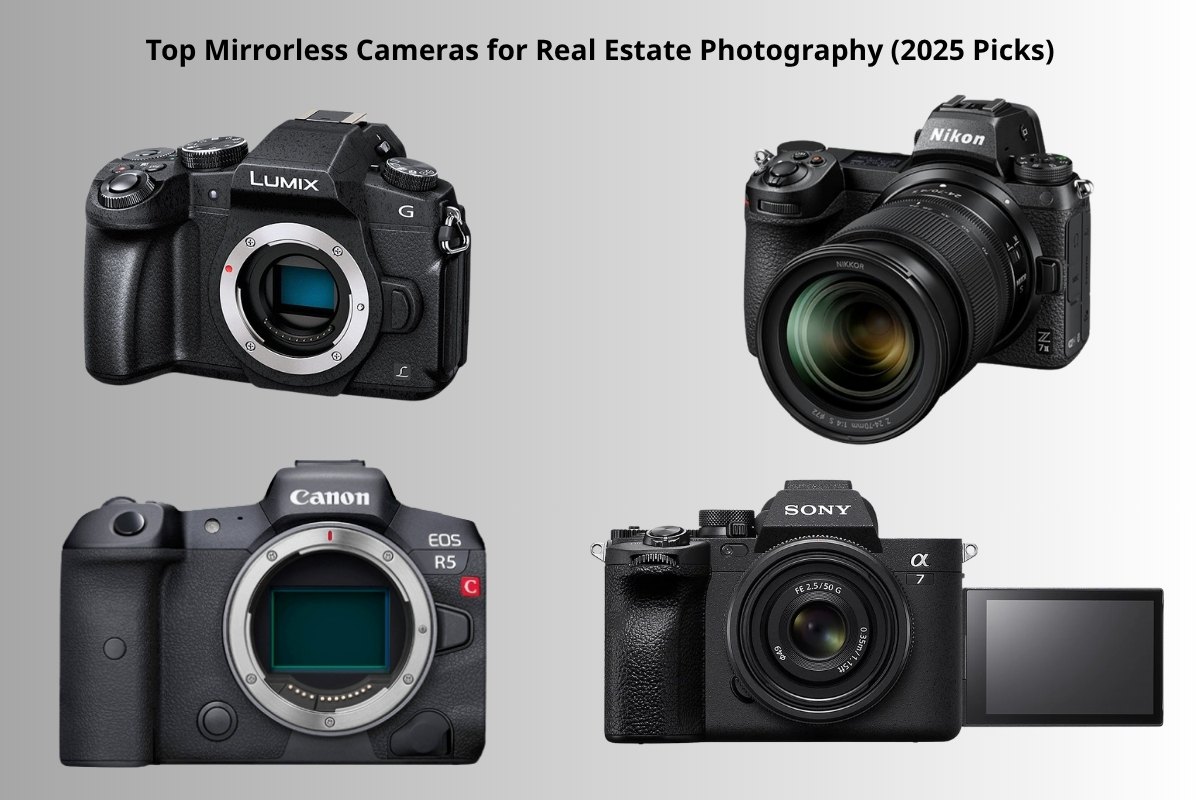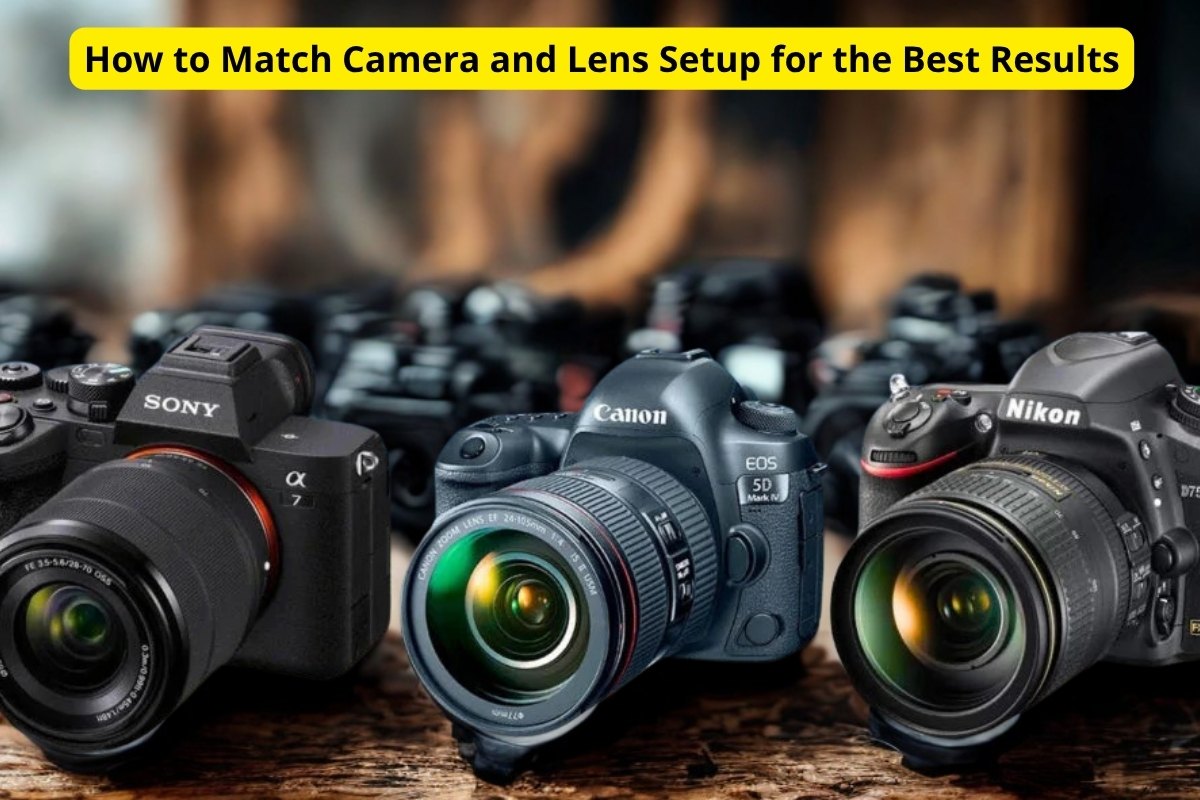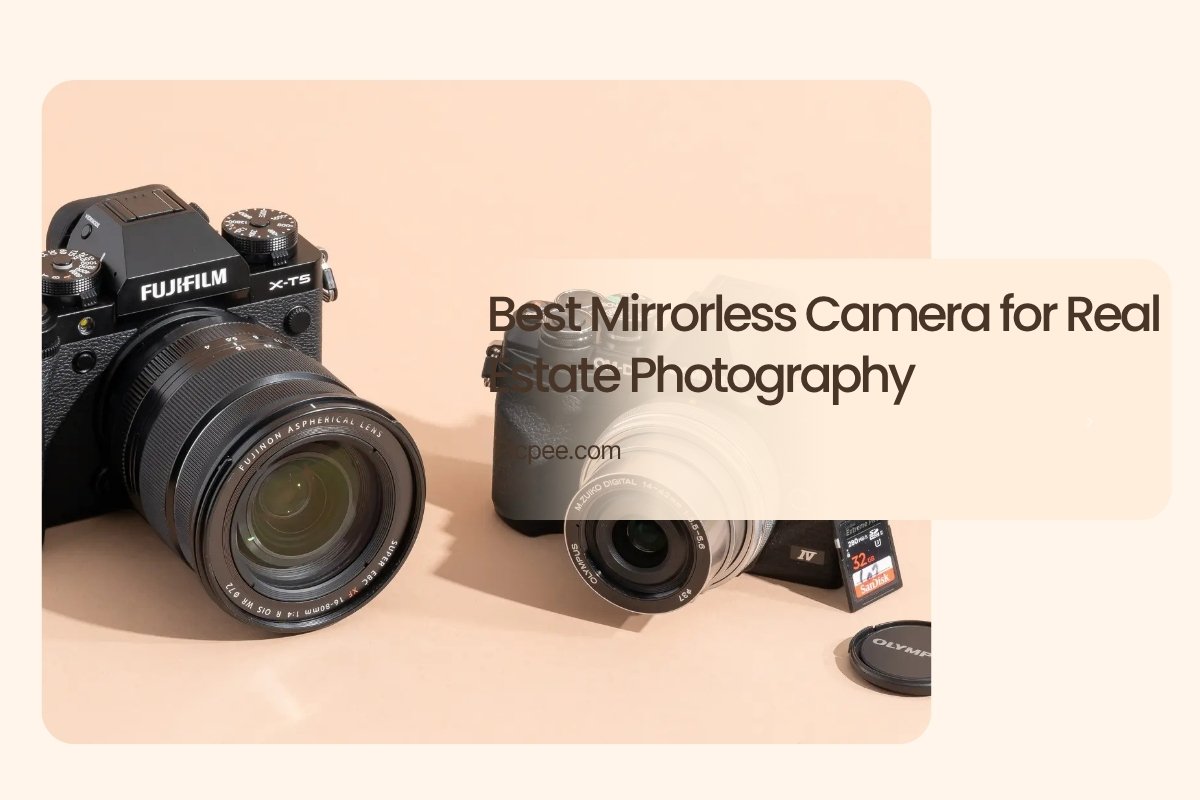Choosing the right mirrorless camera can make a huge difference in real estate photography. A good mirrorless system delivers sharper images, better dynamic range, and more flexibility—particularly useful for capturing interiors with mixed light, bright windows, and shadowed corners. Whether you shoot high-end homes, apartments, or commercial properties, having the best mirrorless camera setup means faster workflow, more consistent results, and photos that truly sell.
Top Mirrorless Cameras for Real Estate Photography (2025 Picks)

Here are some mirrorless models that consistently come up in reviews and real estate-photographer recommendations, with strong specs for property shoots:
|
Camera Model
|
Sensor
|
Key Pros
|
Things to Watch / Consider
|
|
Sony A7 IV
|
Full-frame, ~33 MP
|
Excellent dynamic range, strong autofocus, great video capability.
|
Wide-angle lenses can get expensive; heavier than APS-C.
|
|
Nikon Z7 II
|
Full-frame 45.7 MP
|
Very high resolution, excellent for large prints or showing fine architectural detail.
|
Big file sizes, need fast computers for processing.
|
|
Canon EOS R5
|
Full-frame ~45 MP
|
Great autofocus, good video (4K), strong lens ecosystem.
|
Price is higher; cooling / heat management in long video sessions could matter.
|
|
Sony A7R III
|
Full-frame ~42 MP
|
A generation older but still excellent image quality, IBIS, usable lenses.
|
Older model, battery life less than newer ones.
|
|
Nikon Z50 II
|
APS-C
|
More affordable, lighter, easier wide-lens options for APS-C; good entry point.
|
Crop factor limits ultra-wide field of view; less shallow depth-of-field.
|
|
Panasonic Lumix GH5
|
Micro 4/3
|
Solid video specs, rugged build, good for mixed still/video property walkthroughs.
|
Smaller sensor = more noise in low light, less lens options for ultra wide without fisheye distortion.
|
Key Features to Prioritize in a Mirrorless Camera for Real Estate

To choose the best mirrorless camera, focus not just on brand or spec sheet, but on how the camera handles the realities of property photography:
|
Feature
|
Why It Matters in Real Estate Shoots
|
|
Sensor size and resolution
|
Full-frame or high quality APS-C sensors help capture detail, reduce noise in low light, and allow flexibility for cropping or wide angles.
|
|
Dynamic range & ISO performance
|
Interiors often include bright windows and dark corners. A camera with strong dynamic range lets you retain detail in both, and good ISO performance prevents noise.
|
|
Lens compatibility / wide-angle lenses
|
To show whole rooms and feel spacious, you need wide lenses. Camera must support them natively or via good third-party options.
|
|
Stabilization (IBIS or lens-based)
|
Helps reduce blur in hand-held or low light shots. Essential when you can’t always use a tripod.
|
|
Bracketing and exposure blending
|
To balance very contrasty scenes, bracketing multiple exposures is invaluable. More frames / finer EV steps = smoother HDR blends.
|
|
Screen / Viewfinder features
|
Tilt or flip screens help compose from high or low angles. Real-time histograms or live exposure previews are useful.
|
|
Video capabilities
|
For walkthroughs or walkthrough video marketing, good video resolution (4K), clean HDMI out, and good autofocus tracking are helpful.
|
|
Battery life & portability
|
Shooting many rooms, traveling between properties—need battery capacity and a lightweight body to not slow down workflow.
|
How to Match Camera and Lens Setup for the Best Results

A mirrorless camera alone won’t guarantee stunning real estate photos. The true power lies in pairing your camera body with the right lens and supporting gear. The right combination ensures sharp details, accurate perspective, and professional lighting balance across every room.
- Use Wide-Angle Zoom Lenses: Opt for a 16–35mm or 14–24mm lens on full-frame cameras, or a 10–20mm equivalent for APS-C sensors. These focal lengths capture entire rooms while maintaining natural proportions.
- Choose a Constant Aperture Lens: A lens with f/2.8–f/4 keeps consistent exposure throughout the zoom range, providing control and flexibility in varied lighting.
- Check Edge-to-Edge Sharpness: Real estate photos reveal corners and lines clearly, so ensure your lens remains sharp across the entire frame.
- Stabilize with Tripod and Remote Trigger: Even with in-body stabilization, a sturdy tripod minimizes blur and ensures perfect alignment for HDR bracketing or composite images.
- Add Controlled Lighting: Use LED panels or flashes to fill shadows in dark interiors, ensuring balanced brightness without overexposing windows or bright surfaces.
Recommended Shooting Techniques
Even the most advanced mirrorless camera will only shine if paired with the right shooting techniques. Mastering these core methods ensures sharp, balanced, and visually inviting real estate images that highlight both interior and exterior features naturally.
- Shoot in RAW format: Always capture in RAW to preserve the maximum amount of image data. This allows for better control during post-processing, helping you recover shadow details and correct blown-out highlights effectively.
- Use Exposure Bracketing for HDR: Real estate scenes often have strong light contrasts — for example, bright windows and dim interiors. Bracket at least three exposures and blend them later to create a balanced, high-dynamic-range image that shows detail across all lighting conditions.
- Keep the Camera Level: Use the built-in level or grid lines on your mirrorless camera to maintain perfectly straight vertical and horizontal lines. Crooked walls or slanted ceilings can make rooms look distorted and unprofessional.
- Select Smaller Apertures (f/7.1–f/11): Narrow apertures increase depth of field, keeping both the foreground and background in crisp focus. This is essential when showcasing entire rooms or open-plan spaces.
- Maximize Natural Light: Shoot during the day when natural light fills the space evenly. Use flashes or LED panels only to gently fill darker corners or shadowed areas, maintaining a bright and welcoming atmosphere.
By combining these techniques, you ensure every photo captures the true spatial feel, lighting balance, and architectural precision that buyers expect from professional real estate photography.
Conclusion
Choosing the best mirrorless camera depends on your budget, property type, and workflow. Prioritize sensor quality, dynamic range, stabilization, and lens compatibility. Pair that with good shooting technique and powerful post-processing—and your real estate photos will attract attention, increase credibility, and help close sales faster.
 Single Exposure
Single Exposure Room Cleaning
Room Cleaning Reels
Reels Blended Brackets (HDR)
Blended Brackets (HDR) Changing Seasons
Changing Seasons Slideshows
Slideshows Flambient
Flambient Water in Pool
Water in Pool Individual
Individual 360° Image Enhancement
360° Image Enhancement Lawn Replacement
Lawn Replacement Team
Team Virtual Staging
Virtual Staging Rain to Shine
Rain to Shine Add Person
Add Person Remodel
Remodel Custom 2D
Custom 2D Remove Person
Remove Person 360° Image
360° Image Custom 3D
Custom 3D Background Replacement
Background Replacement Day to Dusk
Day to Dusk Property Video
Property Video Cut Outs
Cut Outs Day to Twilight
Day to Twilight Walkthrough Video
Walkthrough Video Change color
Change color 1–4 Items
1–4 Items



